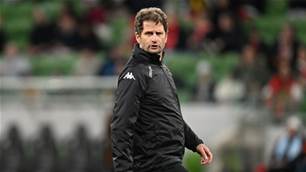Women’s football in Australia has gone through a dramatic change over the last 12 months, and the success of the Matildas has not only allowed for the game to grow but to become a regular topic of discussion.
There is also the option of adding another team into the league but the recent attempt by the Central Coast Mariners to come back to the W-League was delayed in June last year after FFA informed the club the 2017/18 season would remain at nine teams.
Outside the original W-League teams, former NSL side South Melbourne, who have already put their hands up for an A-League license, also believe they can support a W-League team with their local talent.
We at @smfc agree that we can help raise the bar and standard while providing playing opportunities for the many talented mini Matilda’s and young Matilda’s that don’t get the chance to play in the W-League https://t.co/E4VAsvshFX
— Socrates Nicolaidis (@socratesnico) February 18, 2018
While any team wanting to be part of the W-League is welcomed, there needs to be consideration for the sustainability of teams.
Is there enough local and experienced players to support another W-League team, that can be competitive?
Can the new team survive financially and competitively in the league over the coming years?
Do they have the facilities to accommodate a team and matches?
These are all factors, which need to be considered before deciding on how to expand the league.
While FFA is keen to progress and grow the W-League in the coming seasons, there are many options they are considering.
“It is just about prioritising what is the best investment in the W-League,” Highwood said
“Is it 10 teams? Is it full home and away? Is it more broadcast?
“All of those things could require additional investment and we will have to make some strategic choices,” she said.
While W-League will be looked at in the coming months and decisions will be made about the ways to progress the league, FFA has definite plans in place for the Matildas and the way forward for female footballers.
FFA are looking to ensure the Matildas are playing regular games so they continue to develop as a team and stay high in the rankings. Ultimately ensuring qualification for the 2019 World Cup, where they can be a top seeded country.
While the World Cup in France is a short-term goal, there is still work to be done so all players can one day be fulltime professional footballers.
Related Articles

'Timing not right': Montemurro's verdict on Matildas vacancy

Matildas: 'Fourth at the Olympics is honestly the worst place you could come'
.jpg&h=172&w=306&c=1&s=1)












